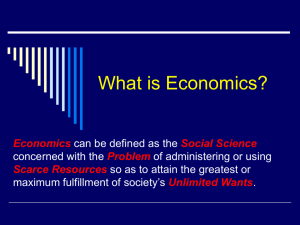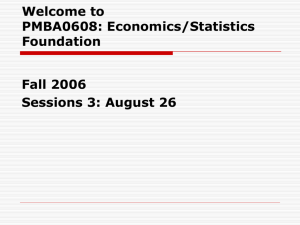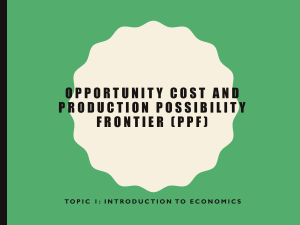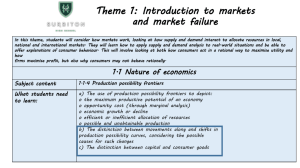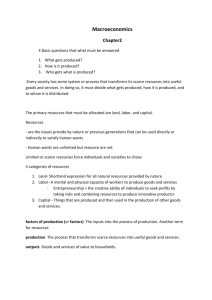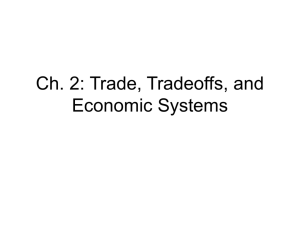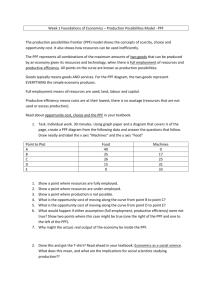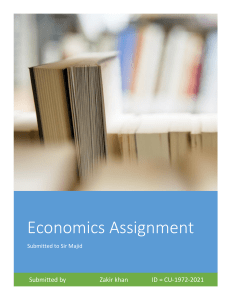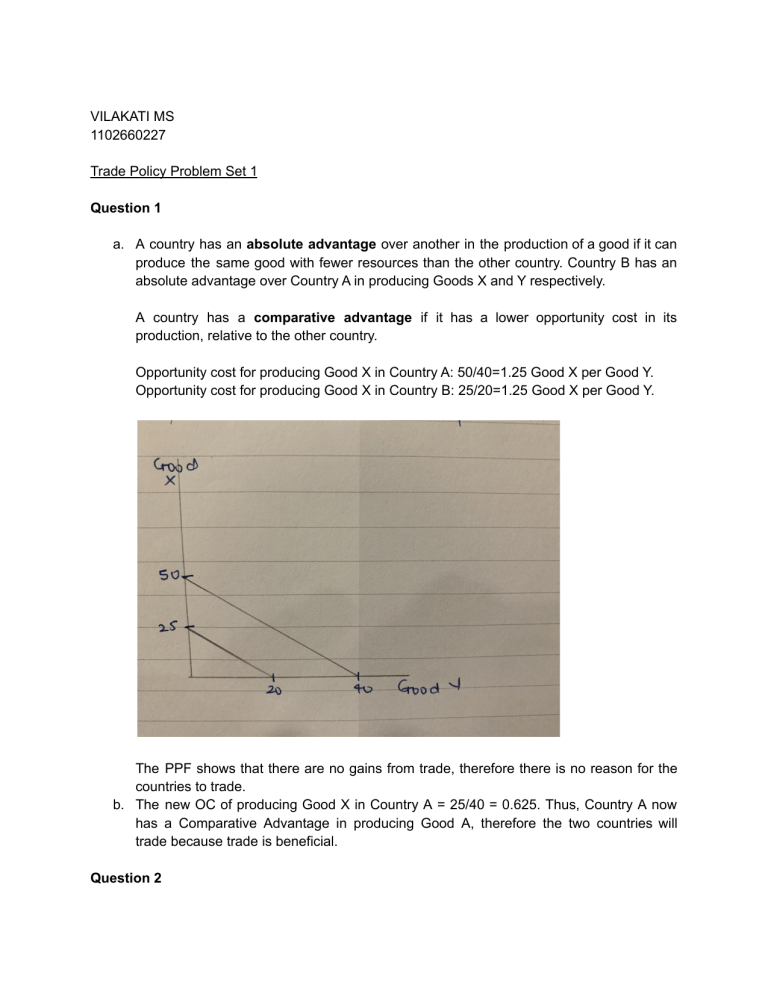
VILAKATI MS 1102660227 Trade Policy Problem Set 1 Question 1 a. A country has an absolute advantage over another in the production of a good if it can produce the same good with fewer resources than the other country. Country B has an absolute advantage over Country A in producing Goods X and Y respectively. A country has a comparative advantage if it has a lower opportunity cost in its production, relative to the other country. Opportunity cost for producing Good X in Country A: 50/40=1.25 Good X per Good Y. Opportunity cost for producing Good X in Country B: 25/20=1.25 Good X per Good Y. The PPF shows that there are no gains from trade, therefore there is no reason for the countries to trade. b. The new OC of producing Good X in Country A = 25/40 = 0.625. Thus, Country A now has a Comparative Advantage in producing Good A, therefore the two countries will trade because trade is beneficial. Question 2 a. Increase in the specific factor endowment of capital (K bar) will affect one sector because the other sector has no use for it in its production. Increase in capital will increase the PPF of Good X (because it uses capital production). It will not have an effect on Good Y because Good Y doesnt use capital in production (capital is specific to sector X). PPF shifts right because there is a greater amount of Good X being produced. Because capital is an immobile factor, there is no change to the production of Good Y. The increase in specific factor capital will lead to the returns of the specific factor in Good Sector X and Good Y sector decreasing, but the return of labor, our mobile factor, will increase. b. Increasing the mobile factor labor will add a small increment to output, as per the law of diminishing marginal returns. The production possibility frontier (PPF) will show the increased opportunity costs because expansion of labor in one industry is possible by transferring labor out of the other industry, which will contract. Due to diminishing returns to labor, each additional unit of labor switched will have a smaller effect on the contracting industry. Increasing the mobile factor labor leads to an increase in the production of Good X and Y. The wage rate will fall, while the returns of specific factors (land and capital) will increase.

